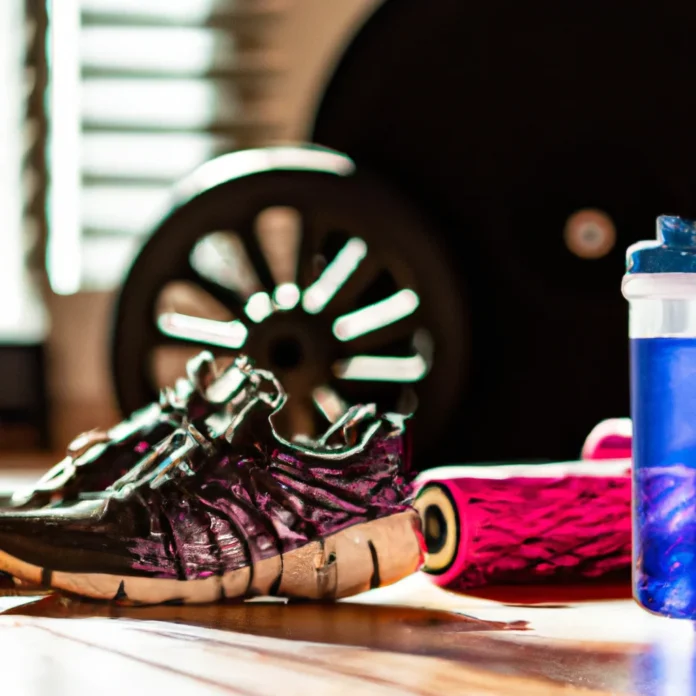The Science Behind Delayed Onset Muscle Soreness (DOMS)
Delayed Onset Muscle Soreness, commonly known as DOMS, is a phenomenon that many athletes and fitness enthusiasts encounter after engaging in intense exercise. Understanding the science behind DOMS can empower individuals to manage their workouts effectively, enhancing their fitness journey. In this comprehensive article, we will explore the mechanisms of DOMS, its symptoms, causes, and ways to alleviate discomfort while optimizing recovery.
What is Delayed Onset Muscle Soreness (DOMS)?
DOMS is characterized by muscle pain and stiffness that typically occurs 24 to 72 hours after intense physical activity. Unlike the immediate soreness experienced during or immediately after exercise, DOMS sets in gradually, peaking around the second day post-exercise. This discomfort is often associated with activities that involve eccentric muscle contractions, where the muscle lengthens under tension.
The Mechanisms Behind DOMS
To understand DOMS fully, we need to examine the physiological processes that lead to muscle soreness. During intense workouts, particularly those involving heavy lifting or unfamiliar movements, microscopic tears occur in the muscle fibers. These microtraumas trigger an inflammatory response, which is a natural part of the body’s recovery process.
Inflammation plays a significant role in the sensation of pain. Following muscle injury, the body releases various substances, including prostaglandins and bradykinin, which sensitize nerve endings, leading to the sensation of pain. Additionally, the accumulation of metabolic byproducts, such as lactic acid, can contribute to the initial discomfort, although lactic acid is not the primary cause of DOMS.
Symptoms of DOMS
The symptoms of DOMS can vary in severity and duration but typically include:
- Muscle stiffness: A noticeable tightness in the affected muscles.
- Pain: Ranging from mild discomfort to severe pain, especially during movement.
- Swelling: Inflammation around the affected muscles may lead to visible swelling.
- Decreased range of motion: Difficulty in performing movements that engage the sore muscles.
Causes of DOMS
DOMS is primarily caused by two factors:
- Eccentric Exercise: Activities that involve lengthening the muscle under tension, such as lowering weights or downhill running, are more likely to induce DOMS.
- Unaccustomed Exercise: Engaging in new workouts or increasing intensity can lead to DOMS, as the muscles are not adapted to the stress placed upon them.
Who is Affected by DOMS?
While anyone can experience DOMS, certain populations may be more susceptible. New exercisers, individuals returning to fitness after a break, or those increasing their workout intensity or volume are often prone to this condition. However, even seasoned athletes can experience DOMS after trying new exercises or pushing their limits.
Strategies to Alleviate DOMS
While DOMS is a natural part of the muscle recovery process, there are several strategies to alleviate its symptoms:
1. Active Recovery
Engaging in light, low-intensity activities such as walking, cycling, or swimming can promote blood circulation to the affected muscles, aiding in recovery.
2. Stretching and Mobility Exercises
Gentle stretching and mobility work can help maintain flexibility and reduce muscle tightness. Incorporating these practices post-workout may minimize the severity of DOMS.
3. Proper Nutrition
Nutrition plays an integral role in recovery. Consuming protein-rich foods aids in muscle repair, while carbohydrates replenish glycogen stores. Hydration is also critical, as it supports metabolic processes and reduces muscle cramps.
4. Cold and Heat Therapy
Applying ice packs immediately after exercise may reduce inflammation, while heat therapy can soothe sore muscles in the days following intense workouts.
5. Compression Garments
Wearing compression clothing can enhance circulation and provide support to sore muscles, potentially reducing the severity of DOMS.
The Importance of Recovery
Recovery is vital for athletes and fitness enthusiasts alike. Allowing time for muscles to heal and adapt is essential for improved performance and injury prevention. Listening to the body and recognizing signs of overtraining can help individuals schedule appropriate rest periods and recovery strategies.
“Soreness is a sign of progress; listen to your body.”
This statement underscores the importance of understanding DOMS as a natural response to exercise. While it can be uncomfortable, it signifies that the body is adapting and strengthening in response to physical stress.
When to Seek Medical Attention
While DOMS is generally not a cause for concern, certain symptoms may warrant medical attention. If individuals experience severe pain that hinders daily activities, swelling that does not subside, or signs of a serious injury, such as a rupture or fracture, they should consult a medical professional.
Myprotein Products for Enhanced Recovery
Investing in quality supplements can support recovery and overall fitness goals. We recommend exploring Myprotein’s range of products designed to aid in muscle recovery and growth. From protein powders to recovery drinks, there is something for everyone. Check out the selection available at Myprotein for products tailored to your fitness needs.
Conclusion
Understanding the science behind Delayed Onset Muscle Soreness (DOMS) equips individuals with the knowledge to manage their training effectively. By recognizing the symptoms, causes, and strategies for relief, fitness enthusiasts can navigate their fitness journeys with confidence. Remember, every bit of soreness is an indication of progress, and proper recovery is essential for long-term success. For more lifestyle and health tips, visit Lifestyle Home.

